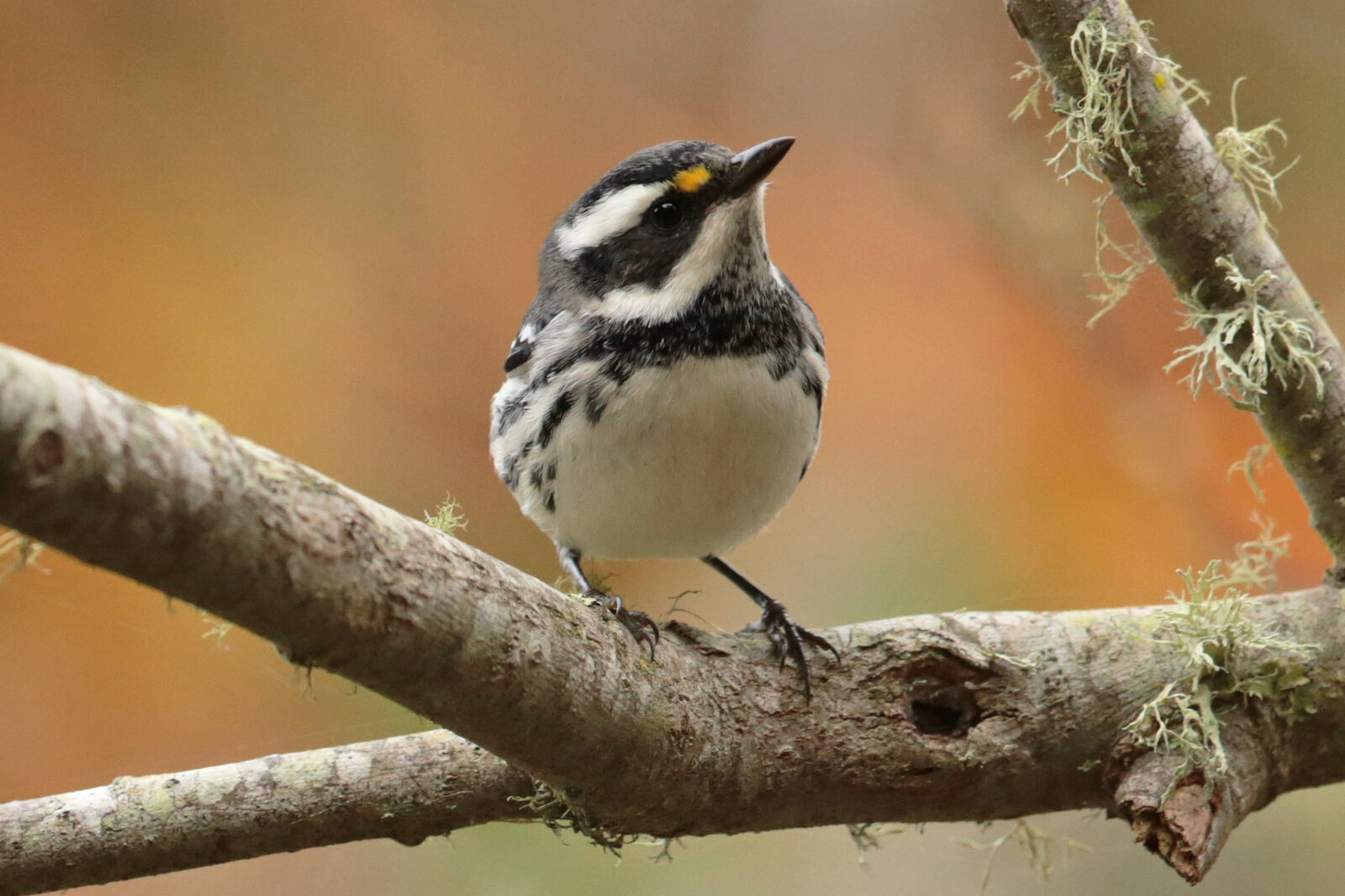Although any birder reading this already knew, I was surprised by the Wisconsin State Journal coverage of a Black-throated Gray Warbler appearing in Madison. Birders are flocking to see this western species that almost never shows up here. A bonus is the bird is as beautiful as it is rare as you can see from the photo.
Black-throated gray warbler photo by Aaron Maizlish
I won't be going out to see it because I would not be able to identify it and I'd be worried that I might scare it or inadvertently cause it some harm. But that won't stop me from writing about it because that's what bloggers do.
First thoughts were about the birders. While I have not learned to bird since becoming active in Madison Audubon, I have most certainly come to respect them a great deal.
Birders know and constantly learn so much about birds to find and identify them. They memorize calls and features, some of which are hard to see under ideal circumstances, which rarely exist in the field. They learn to use finely crafted equipment (harder than you might think; I gave up trying to aim, steady, and focus Mark Martin's high powered and very heavy binoculars). They enter tough terrain, frequently in inclement weather, and show patience and endurance in finding the birds they seek. I shudder every time I hear Sue Martin's quest for spruce grouse a couple of years ago that had over 60 wood ticks showing up to help.
The birds evoke different thoughts. The birds many serious birders are most excited about are often rare. Rare in general because of a small and too often diminishing population that probably does not bode well for the species. Rare in particular because the bird is outside of its normal geographic area. Sometimes those birds are off course because of some natural or man-made disaster. Such birds can be imperiled. Several commentators on the BTGW (for such a little bird it sure has a long name) noted that it's very late in its migration. Unspoken but pretty clear was the thought that it could not survive a Wisconsin winter and is in serious jeopardy.
I wonder how birders reflect on the rarities they encounter. I'm guessing as they ponder their experience ambivalence might develop.
Tiger trout photo by Travel Nevada
Such a turn might not be unique to birders. This summer I caught a tiger trout—another natural beauty. Among flyfishers in Southwest Wisconsin this would be a highly prized catch. In Wisconsin the tiger trout is a naturally occurring hybrid of a brook trout and a brown trout. Besides being a stunning beauty, it's extremely rare. A DNR fish biologist surveying dozens of streams with wild trout might find one or two a year or go years without seeing one. My odds of catching this fish were about the same odds of the first person who saw the BTGW in Madison. At first I was stunned by the unusual beauty of the trout, followed by delight when I recognized what I caught.
But then ambivalence set in. The existence of tiger trout might well mean that a growing population of brown trout is dominating a diminishing population of brook trout. Brook trout are the native inland salmonid of Wisconsin—they need pure and cold water to survive, and climate change is putting many populations at risk. The brown trout can handle warmer water temperatures and has replaced the brookie in many streams. (There is some good news about wild, native brook trout in Wisconsin; not sure how I can work that into one of these blogs.)
Ambivalence is an uncomfortable state of mind, especially when it settles over an experience we've really enjoyed. Perhaps in these cases, it's a stirring of our consciences. It reminds us as we watch a rare bird or hold a rare fish, that we share some responsibility for that rareness. And maybe that should poke us into action. Perhaps we take climate change more seriously or we volunteer or donate to help strengthen the habitat and protections our birds and fish and bugs and herps and mammals need.
By the way, in checking out rare bird sightings for this venture into yet something else I know little about, I noted the Madison lakes have lots of sea ducks rarely seen in this area. They'll be able to migrate when they need to pretty safely. Enjoy finding and watching them, without any ambivalence.
Topf Wells, Madison Audubon board member and advocacy committee chair






